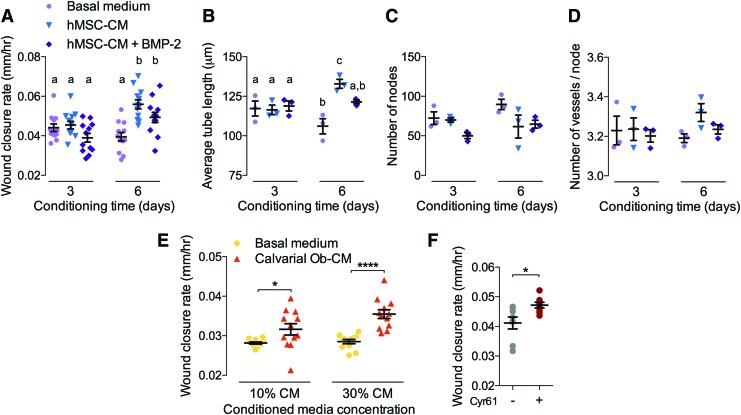FIG. 7.
Effects of hMSC- and COb-conditioned media on angiogenesis. Conditioned medium was collected from hMSCs with or without 100 ng/mL BMP-2 (hMSC-CM+BMP-2 and hMSC-CM, respectively) after 3 or 6 days culture. Migration and tube formation were evaluated using a mixture of conditioned medium (30% by volume) and ECFC basal medium (BM). (A) ECFC wound closure, quantified as wound closure rate in response to hMSC-CM with or without BMP-2 (n = 12/group in n = 4 independent experiments). (B–D) Tubular network formation (n = 3/group). (B) Average tube length. (C) Number of nodes. (D) Number of vessels per node. Similarly, conditioned medium was collected from mouse CObs after 6 days culture. Migration and tube formation were evaluated using a mixture of conditioned medium (10% or 30% by volume) and ECFC BM. (E) ECFC migration, quantified as wound closure rate, in response to COb-conditioned medium (n = 12/group in n = 4 independent experiments). (F) ECFC migration, quantified as wound closure rate (n = 4/group in n = 2 independent experiments) in response to treatment with recombinant human Cyr61 (100 ng/mL). Each replicate is shown with summary statistics represented as mean ± SEM. Significance indicator letters shared in common between groups indicate no significant difference by one-way ANOVA and Tukey's multiple comparisons test. *p < 0.05, ****p < 0.0001. COb, calvarial osteoblast; Cyr61, cysteine-rich angiogenic inducer 61; hMSC-CM, human bone marrow stromal cell-conditioned medium. Color images are available online.

